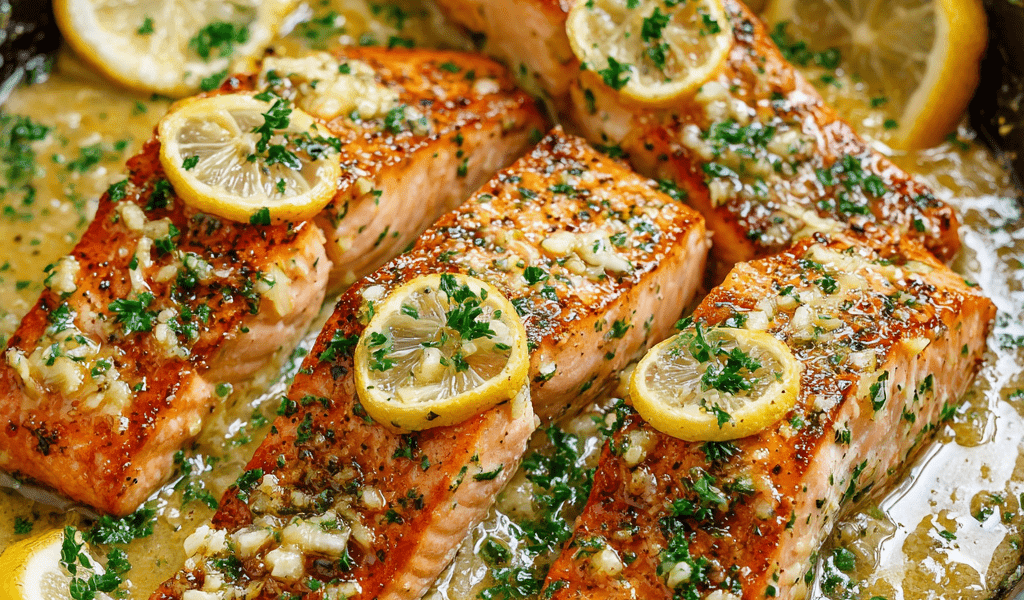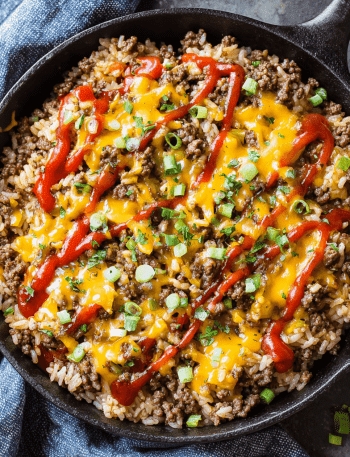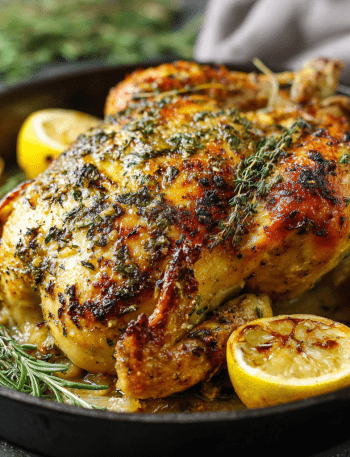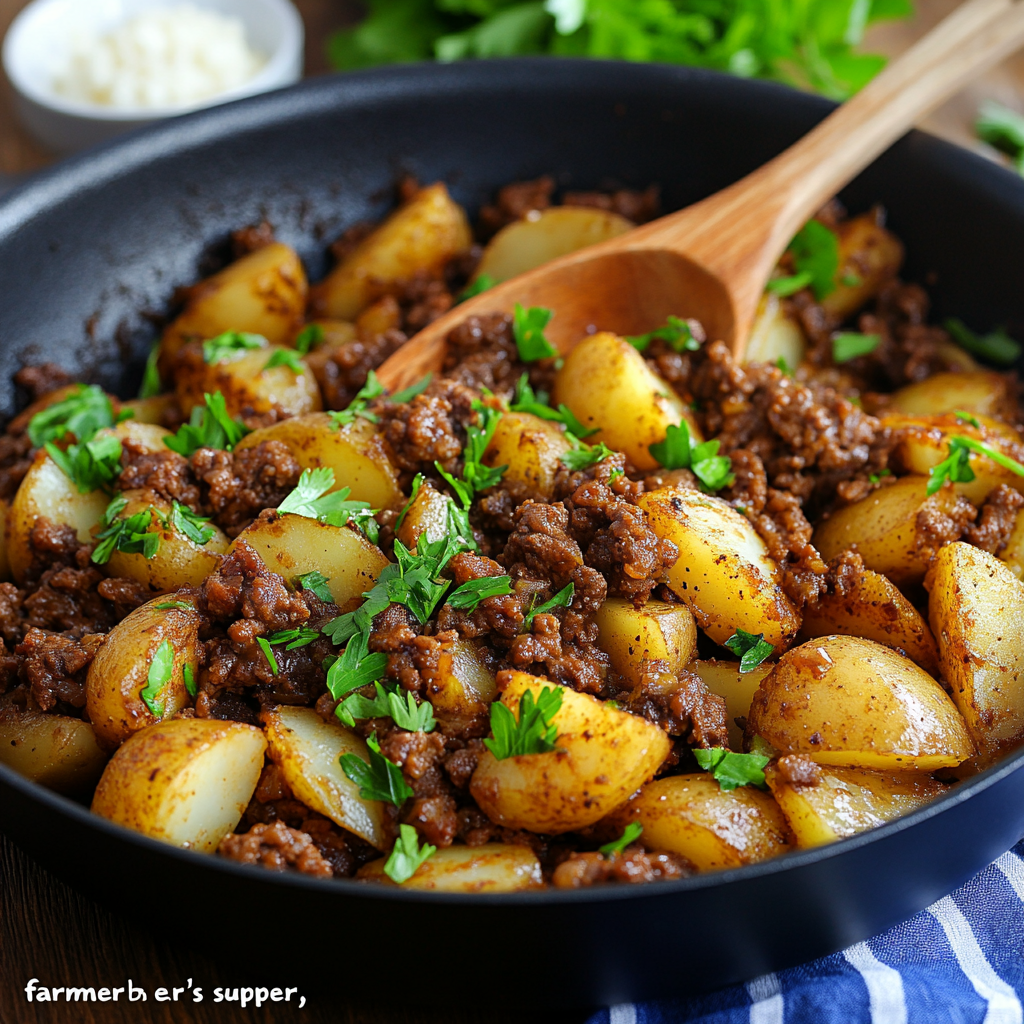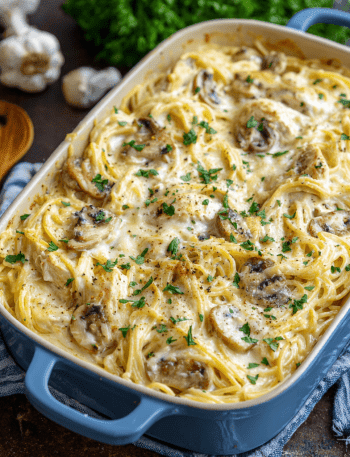Salmon with Garlic Lemon Butter Sauce: Your New 30-Minute Dinner Hero
Hey friends! Emily here. Let’s talk about one of those magical recipes that feels like a secret weapon. You know the one—it’s impressive enough for a date night, but simple enough for a hectic Wednesday when everyone is staring at you, hungry and hopeful. That, my friends, is the glorious power of this Pan-Seared Salmon with Garlic Lemon Butter Sauce.
I’m a firm believer that the best recipes are the ones that deliver a massive payoff for a minimal amount of fuss. This salmon is the poster child for that philosophy. We’re talking about flaky, tender fillets with that perfectly crisp skin (if that’s your thing!), smothered in a sauce that’s so good, you’ll want to drink it with a spoon. It’s rich from the butter, zesty from the lemon, and has that gentle kick of garlic that just makes everything better.
If you’ve ever been intimidated by cooking fish, consider this your invitation to a stress-free, flavor-packed experience. I’m walking you through every single step, from patting that salmon dry (a non-negotiable chef secret for the perfect sear!) to swirling together that luxurious sauce right in the same pan. We’re building layers of flavor and creating virtually no mess. It’s a win-win.
So, whether you’re trying to jazz up your weekly meal prep or planning a little at-home celebration, this recipe is your ticket to a seriously delicious dinner. Grab your favorite skillet, and let’s make something amazing together.
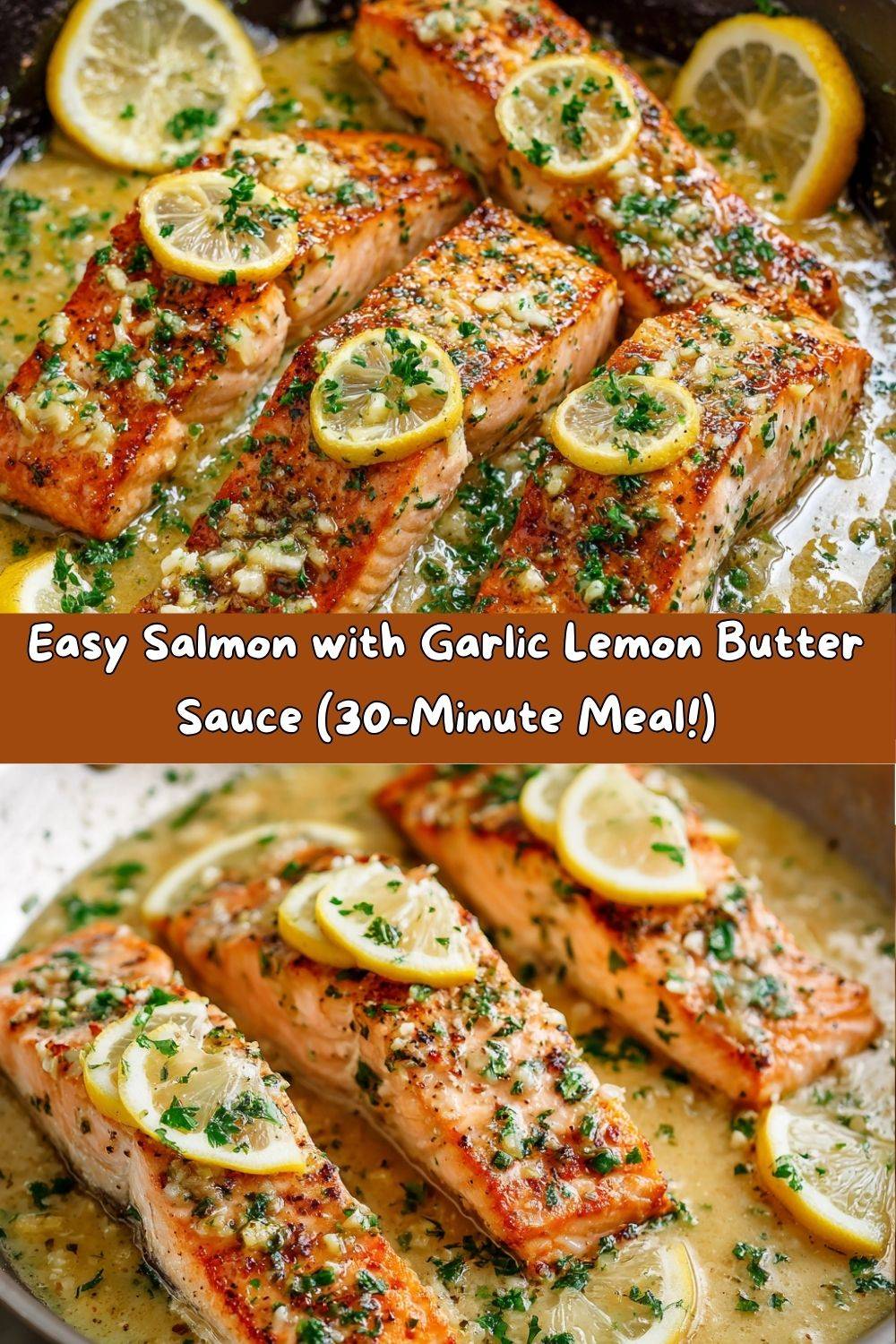
The Little Bistro That Could: A Salmon Memory
This recipe always takes me back to my first “real” kitchen job at this tiny, charming bistro called The Copper Kettle. It was my first taste of a fast-paced dinner service, and let me tell you, it was equal parts exhilarating and terrifying. The menu was small but mighty, and the star of the show was a seared salmon dish almost identical to this one.
I’ll never forget the chef, a wonderfully grumpy man named Marco, barking orders. “Walker! The salmon! Hot pan, don’t you dare move it!” My hands would shake as I carefully laid the fillets in the sizzling oil. The sound was incredible. But the real magic happened after we pulled the salmon out. Marco would deglaze the pan with a splash of white wine and a generous knob of butter, scraping up all those beautiful browned bits stuck to the bottom—the *fond*. He’d add a heap of garlic, a squeeze of lemon, and in seconds, this humble pan was transformed into a sauce-making powerhouse.
Watching the sauce come together was like witnessing alchemy. It taught me that the most incredible flavors aren’t complicated; they’re built on the foundation of what’s already there. That simple act of creating a pan sauce is a lesson I’ve carried with me ever since. It’s the heart and soul of this recipe, and every time I make it, I get a little nostalgic for that chaotic, wonderful kitchen.
Gathering Your Flavor All-Stars
One of the best things about this recipe is the short, sweet ingredient list. We’re using simple, high-quality components that work in perfect harmony. Here’s what you’ll need and why each one matters:
- 4 salmon fillets (6 oz each): I prefer skin-on fillets for that incredible crispy texture, but skinless works perfectly too. Look for fillets that are bright in color and smell fresh, not fishy. Chef’s Insight: If your fillets are very thick, they might need an extra minute or two of cooking. If they’re thin, reduce the time accordingly!
- Salt and black pepper to taste: The fundamental building blocks of flavor. Don’t be shy! A good seasoning on both sides makes all the difference.
- 2 tablespoons olive oil: We need a high-heat oil to get that gorgeous sear without burning. Avocado oil is a great substitute if you have it.
- 3 tablespoons butter: Unsalted butter is my go-to so I can control the salt level. This is the base of our rich, velvety sauce. For a dairy-free version, a high-quality plant-based butter works wonderfully.
- 4 garlic cloves, minced: Fresh is best here! That pungent, aromatic flavor mellows out beautifully as it simmers in the butter. Substitution Tip: In a pinch, 1 teaspoon of garlic powder can work, but the flavor won’t be as vibrant.
- Juice of 1 lemon (about 2 tablespoons): This adds the necessary acidity to cut through the richness of the butter and salmon. Always juice your lemon fresh—bottled juice just doesn’t compare.
- Zest of 1 lemon: Don’t skip the zest! It packs a powerful, fragrant lemon punch that brightens up the entire dish.
- 2 tablespoons fresh parsley, chopped: This is mostly for a fresh, colorful finish, but it adds a lovely herby note. You can substitute with fresh dill or chives for a different flavor profile.
- Lemon slices, for garnish (optional): A beautiful, simple garnish that makes the dish look restaurant-ready.
Let’s Get Cooking: Your Step-by-Step Guide to Perfection
Ready to create some magic? Follow these steps, and you’ll have a flawless dish in no time. I’ve packed each step with my favorite tips and tricks to ensure your success.
- Pat the salmon dry. This is the single most important step for getting that crispy, restaurant-quality sear! Use paper towels to thoroughly dry both sides of each salmon fillet. Moisture is the enemy of browning, so be diligent here. Chef’s Hack: I like to let the fillets sit on a plate lined with paper towels for a few minutes while I prep the other ingredients.
- Season generously. Once the salmon is dry, season both sides liberally with salt and black pepper. Don’t forget the edges!
- Heat the oil. Place a large skillet (stainless steel or cast iron are ideal for searing) over medium-high heat. Add the olive oil and let it heat up until it shimmers. You can test it by flicking a tiny drop of water into the pan—if it sizzles immediately, you’re good to go.
- Sear the salmon, skin-side down. Carefully place the salmon fillets in the hot pan, skin-side down if they have skin. Here’s the key: don’t move them! Let them cook undisturbed for 4-5 minutes. This allows a beautiful golden crust to form. You’ll know it’s ready to flip when the flesh opaques about halfway up the sides.
- Flip and finish cooking. Gently flip the fillets using a thin, flexible spatula. Cook for another 2-3 minutes on the other side, until the salmon is cooked to your liking. It should flake easily with a fork but still be moist in the center. Chef’s Tip: For medium-rare, aim for an internal temperature of 125°F. For medium, 135°F. Remember, it will continue to cook a bit after you take it out of the pan!
- Remove and rest. Transfer the cooked salmon to a clean plate and tent it loosely with foil. Let it rest while you make the sauce. This allows the juices to redistribute throughout the fish.
- Create the glorious sauce. Reduce the heat to medium. Add the butter to the same skillet. As it melts, use a wooden spoon or whisk to scrape up all those delicious browned bits from the bottom of the pan. This is pure flavor gold!
- Sauté the garlic. Add the minced garlic to the melted butter and sauté for about 1 minute, just until it becomes fragrant. Be careful not to burn it, or it will turn bitter.
- Incorporate the lemon. Stir in the fresh lemon juice and zest. Let the sauce simmer gently for 1-2 minutes. It will slightly thicken and become incredibly aromatic.
- Bring it all together. Return the salmon fillets to the pan. Spoon that luscious garlic lemon butter sauce over each fillet, making sure they’re well-coated. Sprinkle with the fresh parsley, and if you’re using them, add a couple of lemon slices for garnish.
How to Serve Your Masterpiece
Now for the fun part—plating! This salmon is incredibly versatile. For a simple, elegant presentation, place a fillet in the center of a warm plate and drizzle plenty of extra sauce over the top and around the sides. The contrast of the pink salmon with the green parsley and yellow lemon is just gorgeous.
When it comes to sides, you have so many delicious options. Here are a few of my favorite pairings:
- For a Light Meal: Serve alongside a crisp arugula salad, steamed asparagus, or roasted green beans.
- For a Heartier Feast: This salmon is fantastic over a bed of creamy mashed potatoes, buttery pasta, or fluffy quinoa. The sauce mingles with the starch underneath for the most delicious bite.
- For a Complete Spread: Add a crusty baguette to the table. Trust me, your guests will want to sop up every last drop of that sauce!
Get Creative! Flavor Twists & Dietary Swaps
Once you’ve mastered the basic recipe, feel free to get creative and make it your own! Here are a few of my favorite variations:
- Herb Lover’s Dream: Add a teaspoon of fresh chopped thyme or dill to the sauce along with the parsley. Tarragon would also be a lovely, slightly anise-like addition.
- Creamy Lemon Butter Sauce: Want an even richer sauce? After adding the lemon juice, stir in 2-3 tablespoons of heavy cream or full-fat coconut milk and let it simmer until slightly thickened.
- Spicy Kick: Add a pinch of red pepper flakes to the butter along with the garlic for a gentle, warming heat.
- White Wine Elegance: After scraping the pan, deglaze with ¼ cup of dry white wine (like Sauvignon Blanc or Pinot Grigio) before adding the butter. Let the wine reduce by half, then proceed with the recipe. It adds a wonderful depth of flavor.
- Whole30/Paleo-Friendly: Simply use ghee or avocado oil instead of butter, and ensure your salmon is wild-caught. It’s just as delicious!
Chef Emily’s Kitchen Notes
This recipe has been a staple in my kitchen for years, and it’s evolved in little ways. I used to be so nervous about overcooking the salmon that I’d undercook it! Now, I’ve learned that a good digital thermometer is a home cook’s best friend. It takes the guesswork out completely.
One funny story: I once made this for a friend who claimed not to like fish. I didn’t tell her what we were having until she took her first bite. Her eyes went wide, and she said, “Okay, I don’t like *other* fish. I like *this* fish.” That’s the power of a good recipe—it can change a mind! The key is that fresh, high-quality salmon doesn’t have a “fishy” taste at all. It’s just buttery and delicious.
Your Questions, Answered!
Q: My salmon skin didn’t get crispy. What happened?
A: The most common culprit is moisture. Make sure you pat the skin *incredibly* dry before seasoning. Also, ensure your pan is properly preheated before adding the oil and salmon. And remember, don’t move the fillet for the first 4-5 minutes! Pressing it down gently with your spatula for the first 30 seconds can also help.
Q: Can I use frozen salmon?
A: Absolutely! The key is to thaw it completely in the refrigerator overnight. Then, pat it *extra* dry, as frozen fish tends to release more water. I don’t recommend cooking it straight from frozen for this recipe, as it will steam rather than sear.
Q: My garlic burned while I was making the sauce. How can I prevent this?
A: Burnt garlic is a bummer! The pan is still very hot after searing the salmon. The moment you lower the heat to medium, add the butter. Let it melt and cool the pan down a bit *before* adding the garlic. If you’re nervous, you can even take the pan off the heat for a minute after adding the butter.
Q: Can I make this sauce ahead of time?
A: You can whisk the sauce ingredients (minus the butter) together ahead of time, but the sauce itself is best made fresh. It only takes a few minutes! However, you can easily double the sauce recipe if you’re a sauce fanatic like me.
A Note on Nutrition
Salmon is a true nutritional powerhouse, and this recipe is a fantastic way to enjoy its benefits. It’s packed with high-quality protein to keep you feeling full and satisfied, and it’s one of the best natural sources of Omega-3 fatty acids, which are amazing for heart and brain health.
The following nutritional information is an estimate per serving (one 6oz fillet with sauce), and can vary based on the exact ingredients you use. Using an unsalted butter will lower the sodium content significantly.
- Calories: ~360
- Protein: 34g
- Carbohydrates: 2g
- Fat: 23g
- Fiber: 0g
To lighten it up, you can reduce the butter by a tablespoon and use a little more olive oil. But remember, healthy fats are an essential part of a balanced diet!
Final Thoughts from My Kitchen to Yours
Well, there you have it! My go-to recipe for a dinner that never fails to impress. I hope this guide gives you the confidence to whip up this beautiful dish and make it your own. Cooking should be fun, creative, and ultimately, deeply satisfying—especially when you get to sit down to a meal that tastes this good.
I’d love to hear how it turns out for you! Did you add a new herb? Try it with a different side? Tag me on social @TastyChow so I can see your beautiful creations. There’s nothing that makes me happier than seeing you guys in the kitchen, having fun and creating delicious memories.
Until next time, happy cooking!
— Emily
